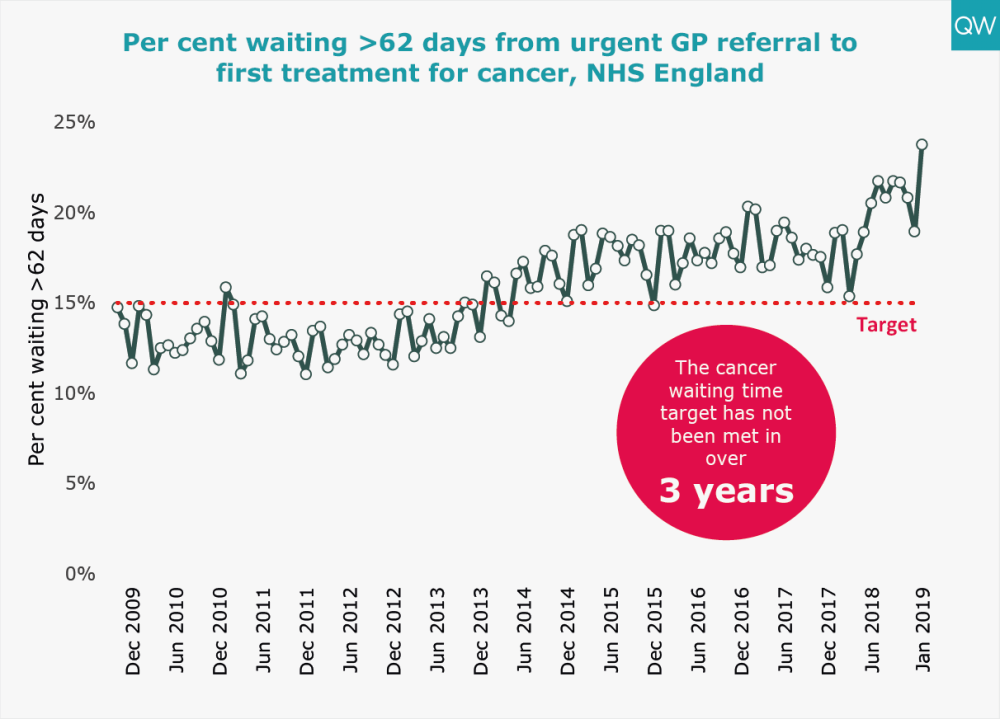Today, NHS England published its Combined Performance Summary, which provides data on key performance measures for January and February of this year. Here we show some of these statistics and how they compare with previous years.
Earlier this week, the Clinically-Led Review of NHS Access Standards Interim Report was released, which proposed some significant changes to many of the targets reported on here. While field testing is occurring, NHS England will continue to monitor performance against the current access standards that are set out in the NHS Constitution Handbook.
For interactive charts showing the quality of health and social care over time, please refer to our 200+ indicators.
A&E
- In February 2019, 15.8% of people attending A&E spent more than 4 hours from arrival to admission, transfer or discharge. This is the highest it has been since the data set began.
- Attendances in major A&E departments (Type 1) reached 1.23 million in February 2019. The average number of Type 1 A&E attendances per day surpassed 44,000 in February 2019, which is 7% higher than in February 2018.
- Emergency admissions via A&E have been increasing year-on-year, reaching over 377,000 in February 2019. The average number of emergency admissions via A&E per day reached 13,482 in February, which is 7% higher than the same month last year.
- 70,813 patients spent more than 4 hours waiting on a trolley from decision to admit to admission in February 2019. This is 3% higher than February of last year, and over 3 ½ times higher than it was five years ago.
- Only three out of 134 major A&E departments met the four-hour A&E waiting time target in February 2019.
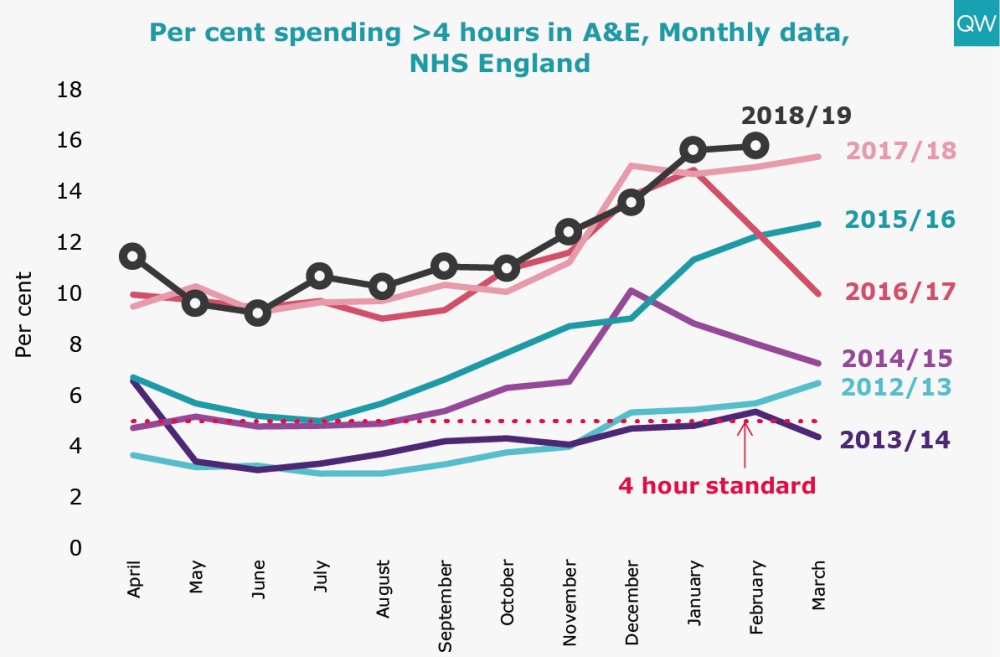
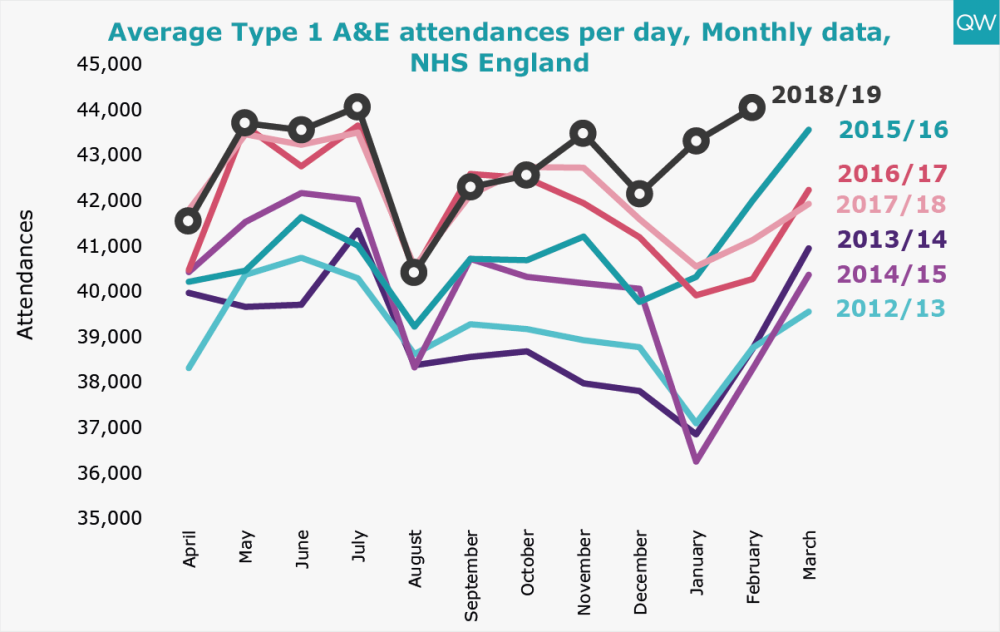
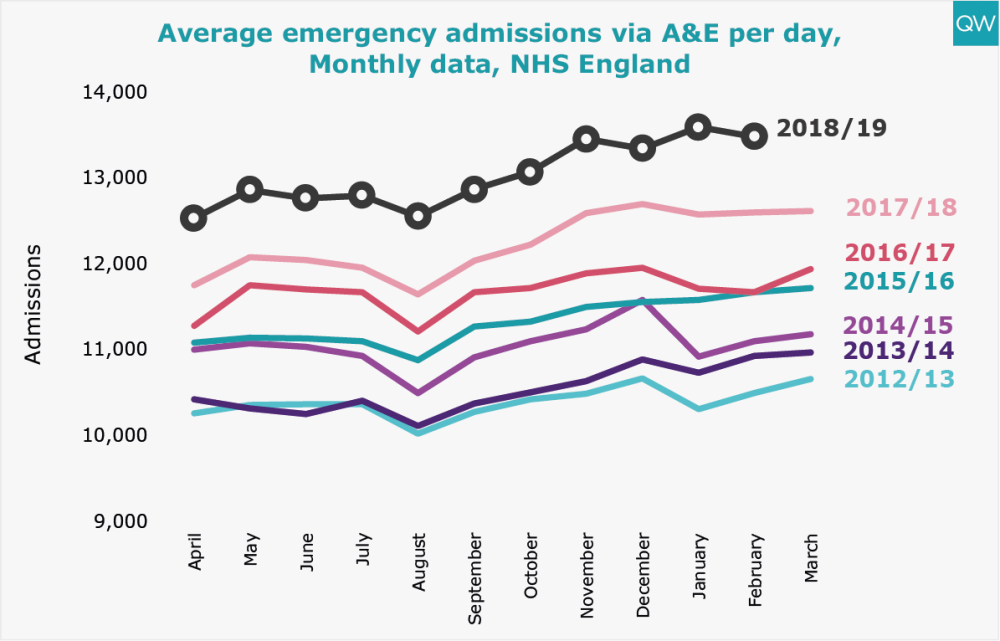
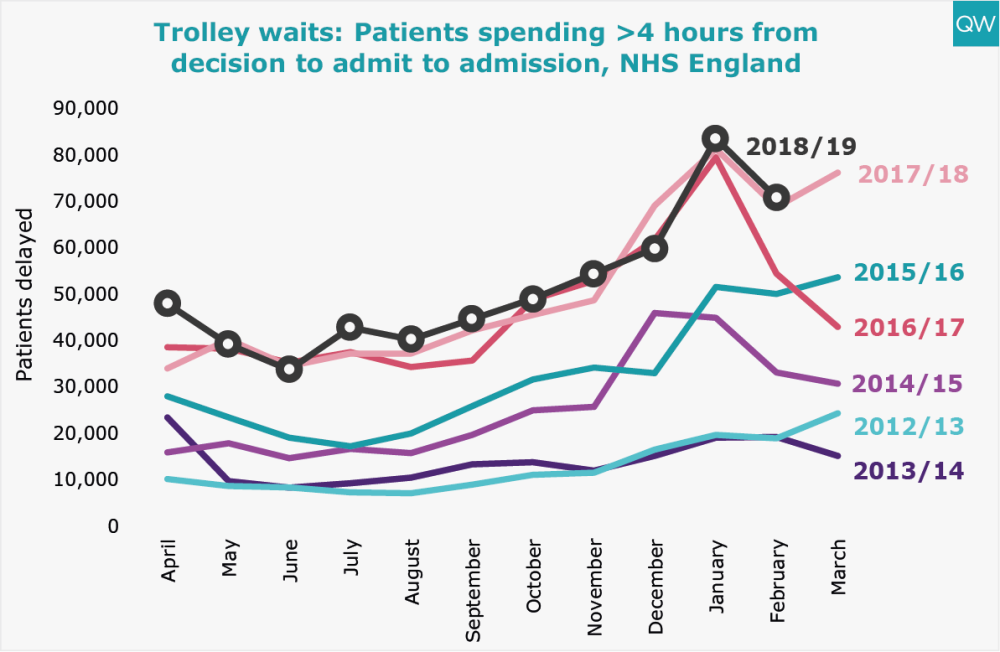
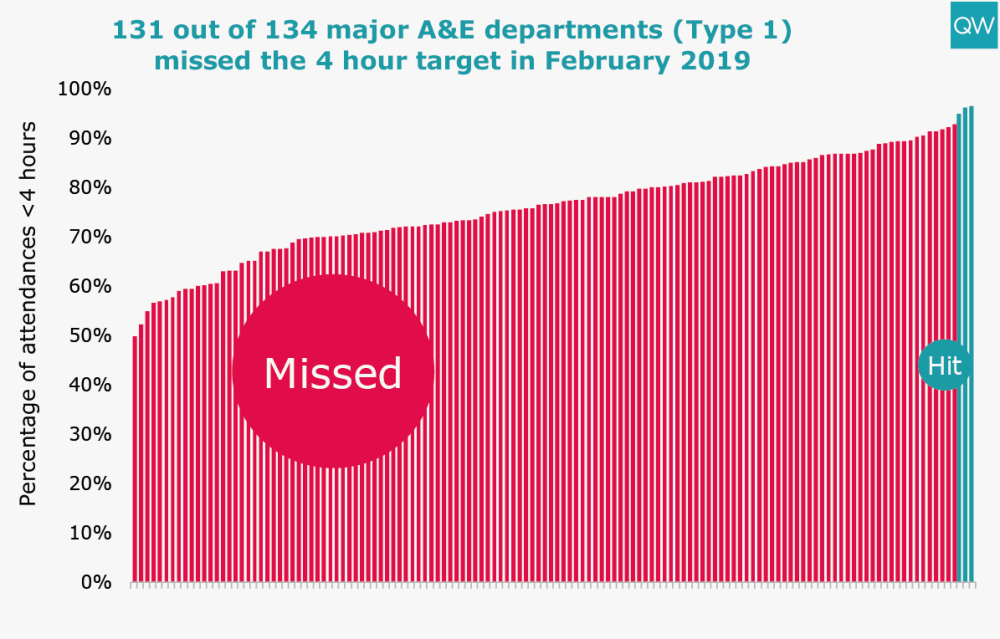
Treatment and diagnostic test waiting times
- The total number of people waiting to start consultant-led elective treatment remained above 4.2 million in January 2019.
- The proportion of people waiting over 18 weeks to start elective treatment reached 13.3% in January 2019. The referral-to-treatment target has not been met since February 2016.
- 2,157 people had been waiting over 52 weeks to start elective treatment in January 2019, which is 15% higher than in January 2018 but 38% lower than it was six months ago.
- In January 2019, 3.6% of patients had been waiting over 6 weeks for a diagnostic test, which is the highest it has been since February 2008.
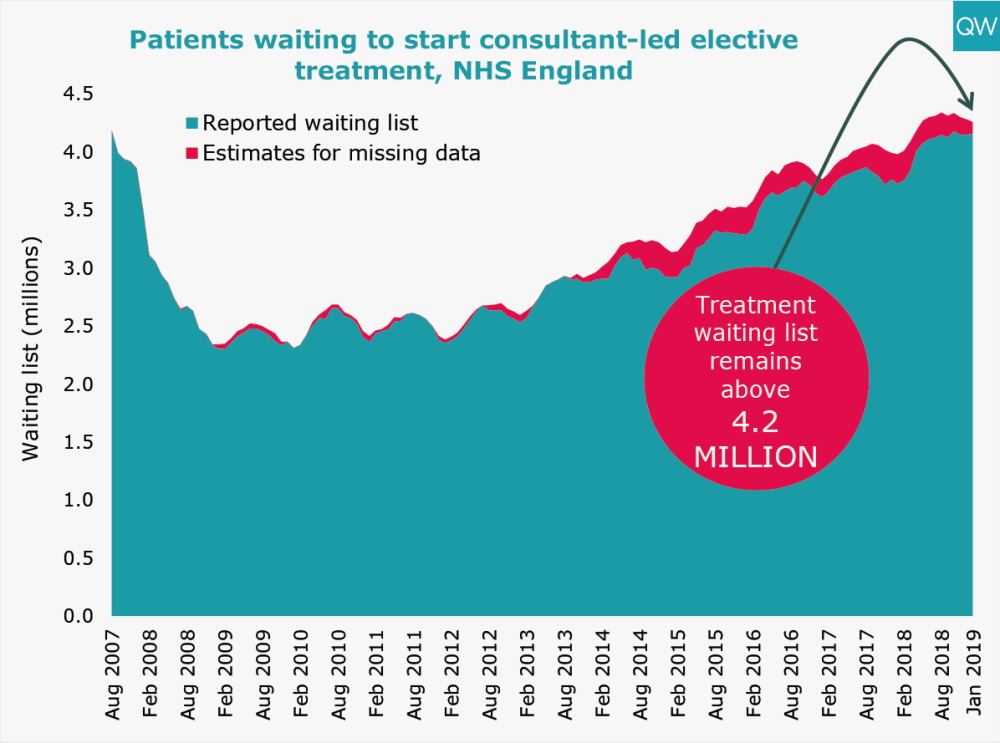
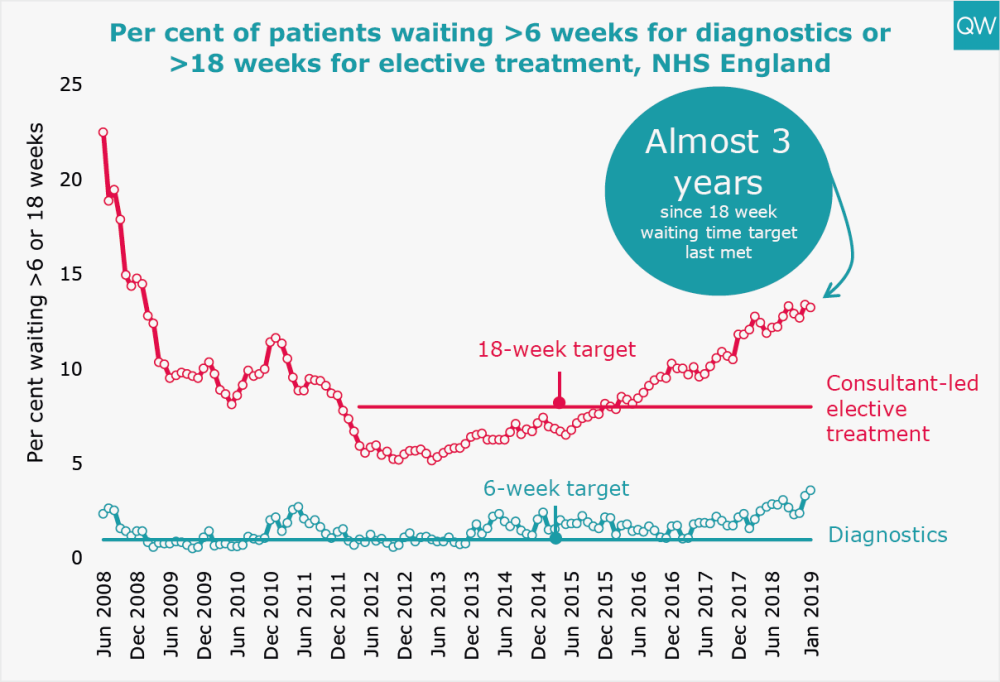
Delayed transfers of care
- The total number of delayed transfer of care days increased slightly to 135,683 in January 2019, which is 31% lower than in January 2017, but 9% higher than it was five years ago.
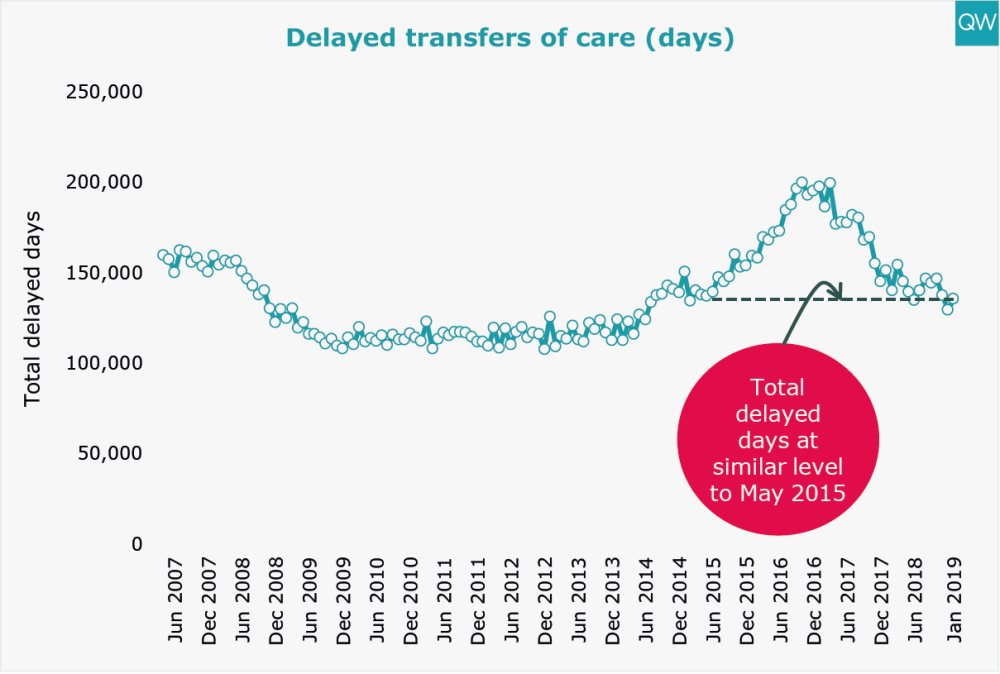
Cancer waiting times
- In January 2019, 23.8% of patients waited longer than two months to start their first treatment for cancer following a GP urgent referral. This is a concerning 4.8 percentage point increase on the previous month, although it is worth noting that between December and January of each year there is usually around a 3-4% drop in performance.
- The 62-day cancer target was last met over three years ago.
